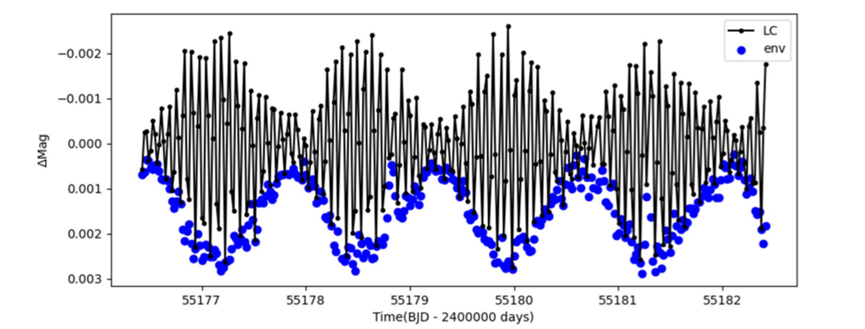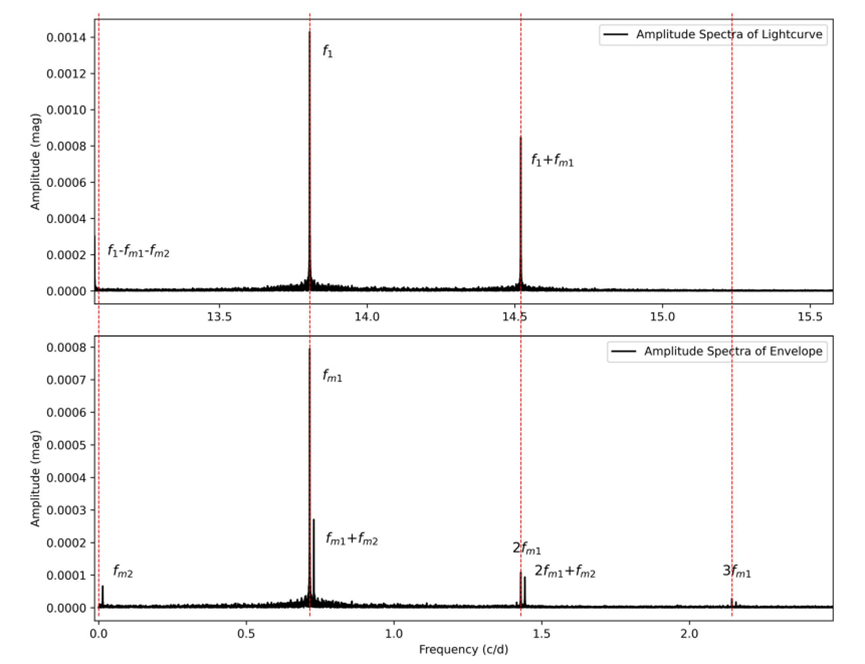

Researchers demodulate the amplitude modulation signal of the Delta Scuti Star
Recently, WANG Haozhi, a PhD student from the Xinjiang Astronomical Observatory (XAO), Chinese Academy of Sciences (CAS), under the guidance of Prof. Ali Esamdin, along with their collaborators developed a method using the Hilbert transform to separate the amplitude modulation signals of pulsating variable stars. Using Delta Scuti Star (δ Scuti star) KIC 10407873 as a case study, the researchers provided detailed parameters of the modulation signal and explored the possible causes of its pulsation modulation.
The related research findings have been published in The Astrophysical Journal.
Based on the four years of continuous long-exposure data from the Kepler Space Telescope, the researchers performed an in-depth analysis of the high-frequency triplet splitting and low-frequency harmonic series of KIC 10407873. By applying the Hilbert transform, they demodulated the high-frequency triplet splitting frequencies, enabling the first precise extraction of the amplitude modulation signals and their parameters for a pulsating variable star.
The researchers effectively separated the low-frequency harmonic series using a prewhitening process and combined residual segmented spectra and phase-folding diagram analysis. The results suggested that these frequencies may be caused by a combination of temperature in homogeneity on the stellar surface and stellar rotation. This hypothesis is supported by vsini data from LAMOST spectroscopy.
The study highlighted that the Hilbert transform performs exceptionally well in demodulating amplitude modulation signals from pulsating variable stars, allowing for the precise extraction of modulation parameters.
The findings indicated that the amplitude modulation frequencies of KIC 10407873 are significantly different from the low-frequency harmonics caused by stellar rotation, suggesting that its amplitude modulation is unrelated to rotation. Additionally, the extracted modulation signals deviate from a standard sinusoidal shape, possibly carrying other valuable information.
Furthermore, the dual amplitude modulation observed in this star shows similarities to the periodically modulated Tseraskaya–Blazhko effect. This research provides critical insights into the amplitude modulation mechanisms of δ Scuti stars.

Figure 1: Amplitude modulation signal extracted using the Hilbert transform.

Figure 2: Comparison of the spectrum of the signal extracted using the Hilbert transform (bottom) with the spectrum of the original signal (top). In the bottom spectrum, two amplitude modulation frequencies are directly identified, confirming the combination frequencies in the top spectrum.
Attachment Download: